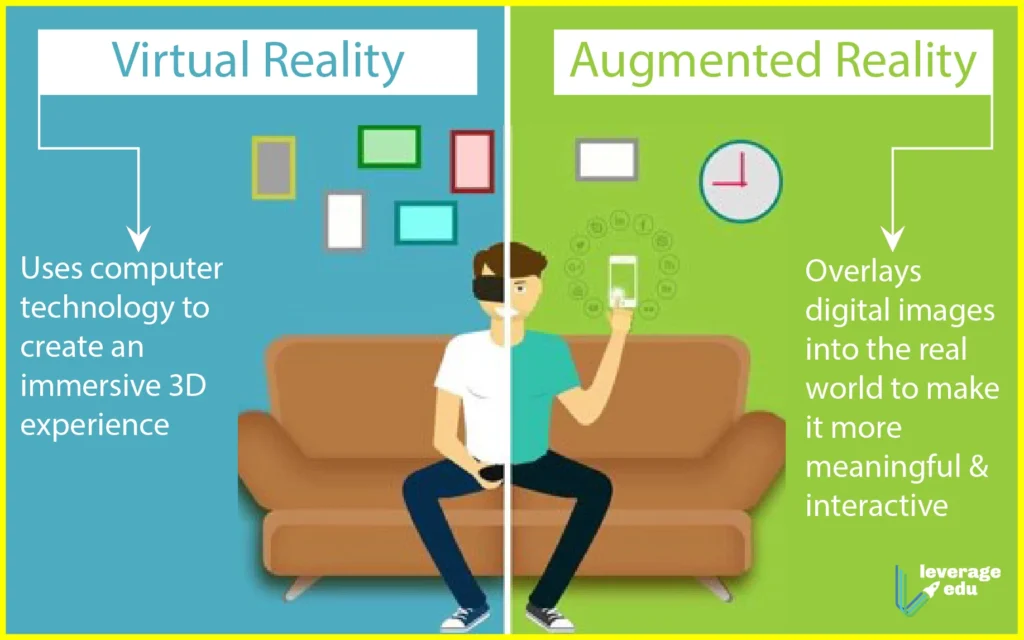Augmented Reality and Virtual Reality are two distinct technologies that are often confused with each other. Augmented Reality (AR) refers to the integration of digital information with the user’s environment in real time, while Virtual Reality (VR) creates a completely artificial environment that is experienced through sensory stimuli. The main difference between the two lies in the level of immersion and interaction with the user’s surroundings. While AR enhances the real world with digital elements, VR immerses the user in a completely virtual environment. Understanding the differences between these two technologies is crucial for grasping their potential applications and impact on various industries.
One of the most frequently asked questions about Augmented Reality vs. Virtual Reality is how they are used in different fields. While AR is commonly applied in industries such as education, gaming, and healthcare to provide interactive and informative experiences, VR is often used in simulations, training, and entertainment to create immersive and realistic environments. This distinction in usage highlights the unique strengths of each technology and the diverse ways in which they can be integrated into various sectors.
What is Augmented Reality?
Augmented Reality (AR) is a technology that superimposes digital information, such as images, videos, or 3D models, onto the real world environment. This is usually done through the use of a device, such as a smartphone or AR glasses, that has a camera and a screen. AR technology enhances the user’s perception of the real world by adding virtual elements to it, creating an interactive and immersive experience.
AR can be used in various applications, such as gaming, education, navigation, and retail. For example, in gaming, AR allows users to interact with virtual objects in their real-world environment, creating a more engaging and interactive gaming experience. In education, AR can be used to provide interactive learning experiences by overlaying educational content onto real-world objects.
How does Augmented Reality work?
AR works by using sensors and algorithms to detect the user’s environment and then overlay virtual content onto it in real time. The device’s camera captures the real-world environment, and the AR software processes the image and identifies specific points or objects. Once these points are identified, the virtual content is superimposed onto the real world, aligning with the user’s perspective and movements.
Some AR applications also use markers, such as QR codes or image targets, to trigger the display of virtual content. When the device’s camera detects these markers, it activates the associated digital content, allowing users to interact with it in the real world.
What is Virtual Reality?
Virtual Reality (VR) is a technology that immerses users in a completely virtual environment, separate from the real world. VR devices, such as headsets or goggles, provide users with a 360-degree view of a computer-generated environment, and often include audio and haptic feedback to enhance the sense of presence and immersion.
VR technology is commonly used in gaming, simulations, and training, where users can interact with and navigate through virtual environments. It can also be used for virtual tours, allowing users to explore simulated versions of real-world locations and landmarks.
How does Virtual Reality work?
VR works by using a combination of hardware and software to create a simulated environment that users can interact with. VR headsets or goggles display stereoscopic images to each eye, creating a sense of depth and immersion. In addition, head tracking and motion controllers allow users to move and interact within the virtual environment, making the experience more interactive and engaging.
VR environments are created using computer-generated graphics and 3D models, and can range from realistic simulations to fantastical, imaginary worlds. The goal of VR technology is to completely transport users to a virtual space, where they can interact with digital objects and experience a sense of presence as if they were actually there.
| Augmented Reality | Virtual Reality |
|---|---|
| Overlays digital information onto the real world | Immerses users in a completely virtual environment |
| Enhances the existing environment | Creates a new environment |
| Examples: Pokémon Go, Snapchat filters | Examples: Oculus Rift, HTC Vive |
Augmented Reality and Virtual Reality are two distinct technologies that serve different purposes. Augmented Reality enhances the real world with digital information, while Virtual Reality immerses users in a completely virtual environment.



